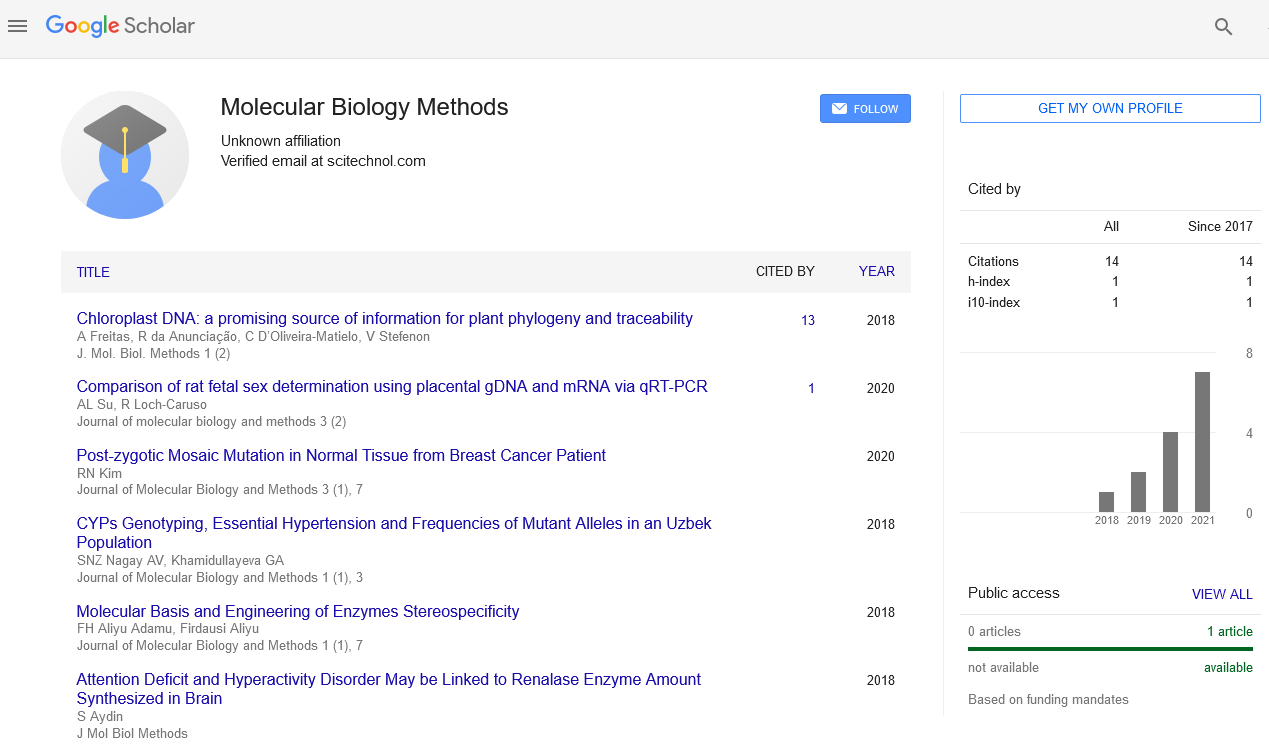Perspective, J Mol Biol Methods Vol: 7 Issue: 3
Cellular Secrets: A Comprehensive Guide to Macromolecule Blotting Techniques
Jenny France*
1Ecology and Evolutionary Biology, Cornell University, New York, United States of America
*Corresponding Author: Jenny France,
Ecology and Evolutionary Biology, Cornell
University, New York, United States of America
E-mail: francejenny@cornell.edu
Received date: 26 August, 2024, Manuscript No. JMBM-24-151584;
Editor assigned date: 28 August, 2024, PreQC No. JMBM-24-151584 (PQ);
Reviewed date: 11 September, 2024, QC No. JMBM-24-151584;
Revised date: 18 September, 2024, Manuscript No. JMBM-24-151584 (R);
Published date: 25 September, 2024 DOI: 10.4172/JMBM.1000175
Citation: France J (2024) Cellular Secrets: A Comprehensive Guide to Macromolecule Blotting Techniques. J Mol Biol Methods 7:3.
Description
Macromolecule blotting refers to a set of techniques used to detect and analyze macromolecules, specifically nucleic acids and proteins. These methods have become integral to molecular biology and biochemistry, providing analytical insights into the structure, function and interactions of biomolecules. The most widely used blotting techniques include Southern blotting, Northern blotting and Western blotting, each designed for different types of macromolecules.
Southern blotting, is used for the detection of specific DNA sequences within a complex mixture. The process begins with the digestion of genomic DNA using restriction enzymes, which cuts the DNA into smaller fragments. These fragments are then separated by gel electrophoresis, allowing them to be resolved based on size. After electrophoresis, the DNA is transferred from the gel onto a membrane, typically made of nitrocellulose or nylon. This transfer is accomplished through capillary action or electro blotting, which helps preserve the spatial orientation of the fragments. Once the DNA is immobilized on the membrane, it is incubated with a labelled probe usually a complementary DNA or RNA sequence that is tagged with a radioactive or fluorescent label.
Northern blotting, serves a similar purpose but focuses on RNA detection. This technique is essential for studying gene expression, as it allows researchers to analyse mRNA levels in different tissues or under varying conditions. The procedure closely mirrors that of Southern blotting: RNA samples are extracted from cells or tissues, separated by gel electrophoresis and transferred to a membrane. The membrane is subsequently probed with a labelled complementary RNA or DNA probe. The hybridization and detection steps follow the same principles as those in Southern blotting, providing qualitative and quantitative information about RNA species present in the sample.
Western blotting, is the technique of choice for detecting specific proteins. The process begins with the extraction of proteins from cells or tissues, followed by separation using Sodium Dodecyl Sulphate- Polyacrylamide Gel Electrophoresis (SDS-PAGE). This method denatures proteins and separates them based on their molecular weight. After electrophoresis, proteins are transferred onto a membrane, typically nitrocellulose or Polyvinylidene Fluoride (PVDF). The transfer is often accomplished using an electric current in a process known as electro blotting. Once the proteins are immobilized, the membrane is blocked with a protein solution to prevent nonspecific binding. The membrane is then incubated with a primary antibody specific to the target protein, followed by a secondary antibody conjugated to a detection enzyme or fluorophore. The enzyme reaction produces a detectable signal, allowing visualization of the protein band corresponding to the target.
In conclusion, macromolecule blotting techniques are fundamental tools in molecular biology, providing essential methods for the detection and analysis of DNA, RNA and proteins. The ability to visualize and quantify these macromolecules has opened new avenues in research and clinical diagnostics, contributing significantly to our understanding of biological processes and disease mechanisms. As these techniques continue to evolve, they will likely remain critical in advancing our knowledge of the molecular theory of life.
 Spanish
Spanish  Chinese
Chinese  Russian
Russian  German
German  French
French  Japanese
Japanese  Portuguese
Portuguese  Hindi
Hindi 